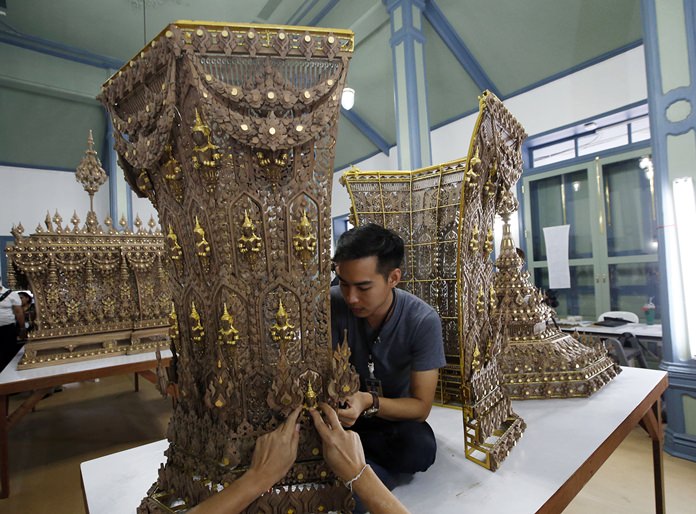
Members of the public and students with craftsmanship skills joined a team of craftsmen in the creation of the sandalwood royal urn for the Royal Cremation Ceremony for His Majesty the late King Bhumibol Adulyadej.
Support Pattaya Mail – Click Here
Director-General of the Fine Arts Department Anandha Chuchoti said that the Office of Traditional Arts created the design work of the sandalwood royal urn, which was built at the Office of Traditional Arts on Buddhamonthon 5 Road, Salaya, Nakhon Pathom province.
The sandalwood royal urn was made from fragrant dead-standing sandalwood trees taken from the Kui Buri National Park in Prachuap Khiri Khan province. A rite was performed on 14 November 2016 to ask for permission from holy spirits to take sandalwood from the national park for the Royal Cremation Ceremony.
The Department of National Parks, Wildlife, and Plant Conservation was entrusted with cutting and processing the fragrant sandalwood into planks before presenting them to the Fine Arts Department. The sandalwood royal urn was elaborately carved in accordance with the royal tradition. Traditionally, artistic, geometric, and floral patterns are used, signifying the ranks and honors of the royal remains.
Craftsmen created and enlarged the designs before carving the fragrant sandalwood, processed into thin chips that decorate the prepared royal urn structure. The processed sandalwood was also made into pieces of firewood and traditional sandalwood flowers for members of the Royal Family, who will use them in the Royal Cremation Ceremony.
The Office of Traditional Arts has assigned 150 personnel from various fields to handle the building of the sandalwood royal urn. Members of the public and students who were allowed to take part in creating the royal urn worked under the supervision of the Office of Traditional Arts.
A number of personnel also handled other tasks, such as carpentry in order to renovate royal carriages and palanquins to be used in the Royal Cremation Ceremony. The Sanam Luang area was handed over to the Fine Arts Department on 10 January 2017 for the construction of the royal crematorium, where the royal urn is placed on the funeral pyre for the cremation.





